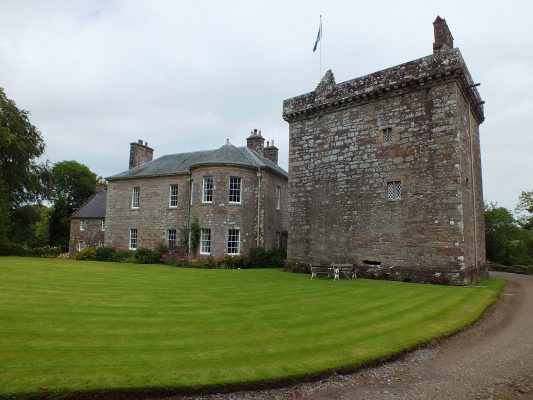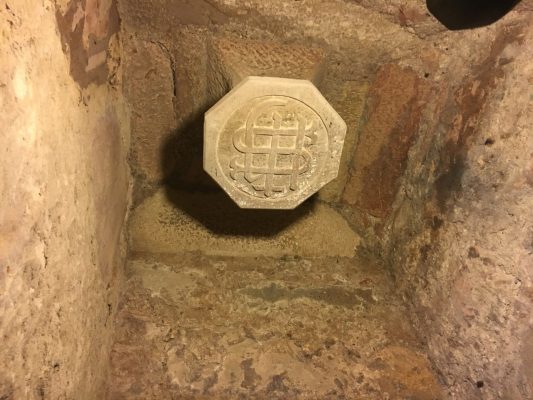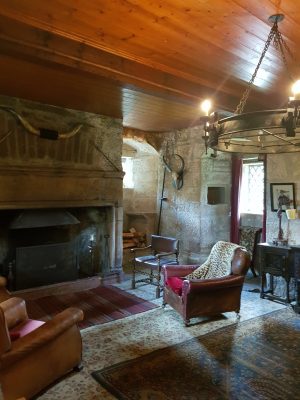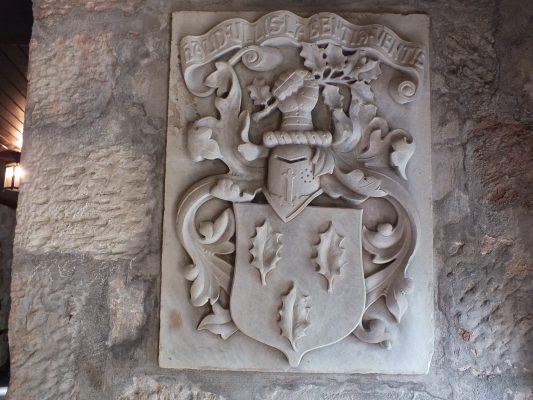Jim and Karen delve into their family history in the latest installment of their adventures through the UK in a motorhome.
The classic Kiwi OE
One of the things that Kiwis in general are known for globally is our willingness and readiness to travel. Whether it’s because of our isolated position at the bottom of the world, or because we are all related to other people who travelled to NZ originally, it seems it’s in our genes. For whatever reason, the “OE” is a right of passage for a lot of Kiwis at some point, and the UK & Europe has always been a focal point as we have looked to our heritage.
In recent years there seems to be a global upsurge and interest in genealogy as we look to see where we came from. I know in our wider family we have three or four members who are actively involved in looking into the family tree and our roots.
So it’s been hugely interesting to get an unexpected glimpse into Karen’s family history on this trip. When we set off we had no discussions around delving into our historical background, but on the course of our travels to Scotland, Karen’s brother alerted us to the fact we’d be travelling close to the town where the Irving family clan was based. He asked us to stop in at a cemetery and see if we could see any Irvings there, and if possible detour and look at the clan seat, as it still existed and there was an old tower still there it seemed. From this brief suggestion we thought “no worries we’ll go and find the old ruin and get a photo or two for the family heritage album.” Well, what a surprise we turned up and a story to go with it.
Family history surprises
Wind back two or three weeks ago. We had just crossed the border into Scotland and we headed to the Dumfriesshire area to look at this supposed ruin called Bonshaw Tower. We parked up in the local village and wandered down the road and up the hill to the lane that the GPS told us contained the ruins. The sign at the end of the lane leading in said “Bonshaw Tower private”. Not to be put off, we wandered up the tree-shrouded lane thinking there’d be a derelict old ruin at the end, but maybe we could sneak a wee look at it anyway.
As we got down the lane the treed sides became more clipped and organised and we started to see some obviously occupied substantial dwellings running off the lane. Finally we came round the last corner very slowly. We peeked round and saw a very substantial home and tower within manicured grounds. While looking at this property it was evident that Bonshaw Tower was far from a ruin.

Bolstering the old Kiwi bottle, we walked up and knocked on the door and said in our best Kiwi accents: “Hi it’s your cussie Karen and Jim from New Zealand here, is this the ancestral home of the Irvings?” or words to that effect. It was, and it still is, and Irvings still live there, as they have for the last 700 plus years.
After a brief chat with the current owner Chris Irving we were extended an invite to come back and have a full look around and catchup when we came back through in a couple of weeks’ time.
United with the Irvings
When we came back we were once again greeted by Chris Irving who gave us a rundown of the history of the Irvings in the area and the tower. If you are an Irving, Irvine, Irwin or any other one of the 270 variations of spelling of the clan name this is for you.
Chris was quick to point out that a lot of the old history of the clan is anecdotal as good written records were not available prior to the 15th century. This was because of all the wars, ransacking and so on that went on in the border areas through the ages destroying so much information.
The story goes like this. Sometime in the early 1000AD a Duncan Eryvine was sent south by the Scottish king at the time to be the Governor of Cumbria and look after the region. He is reputed to have built the first castle tower at Bonshaw then (the one we saw today was built in the mid 1500s, and is the third one built – the first two were previously destroyed in wars).
From then till the 1300s there is not much known, but the name obviously morphed to Irving because Robert the Bruce was hidden by the Irvings at Bonshaw when they were fighting the English in the early 1300s. One of the Irving’s sons at the time became Robert the Bruce’s armour bearer and secretary.
When he finished his service after Robert became King of Scotland, this man “William Irving” was awarded the hereditary barony of Drum, and Drum Castle is another Irving family Clan home today as well.
Following Robert the Bruce in 1300-odd not much is known other than that the original tower was destroyed in a battle. Another was built, which was also destroyed some time in the 1500s. The current tower was built around 1570 but this time they built in stone rather than the mostly wooden structures previously.
Raiding and plundering in the family genes
As Chris told the story he alluded to the fact that over the years the border people and clans essentially became a law unto themselves. The area was a long way from the reach of the kings of England, and a long way from the reach and laws of the King of Scotland. With the wars and skirmishes continually going on, all the clans and families living both sides of the English/Scottish border became what they now call “Border Reivers”. Essentially Reivers were raiders and plunderers – rustlers, mercenaries, thieves and so on doing what they liked, to who they liked, and running their lives worried only about their own immediate family clans.
Reiving had no social stigma attached to it; it was simply a way of life in the border regions. After all there was no point in growing crops as the soil was poor and they were easily burnt. So cattle rustling, plundering and raids against others not of your clan was the order of the day. There were a lot of feuds because of the reiving happening, and this along with the wars kept them all busy. The Irvings are not the only clans that are known in history as Border Reivers – other famous clan names from the border regions who also have this Reivers distinction are the Armstrong, Maxwell, Johnston, Graham, Bell, Scott, Nixon, Kerr, Crozier and Robson clans to name a few.
So the current Bonshaw Tower was built around 1570 by an Edward Irving. At the time they built seven towers around the area for different Irving members and their families. All were within sight of each other so that they formed a chain of fortresses and protected each other. The towers were built as functioning practical fortresses, not as statements of wealth. As a result there are no real frills or adornments, other than the prominent position held by a “Crusaders stone” reportedly brought back from the crusades by one of the Irvings at the time.

Bonshaw was always the main clan chief’s tower and the place where all the plundering raids were organised from and as mentioned has stayed in the family for over 700 years now.

Chris, who is the current 21st Laird of the Clan, has been in the home for 11 years now. He took over from his father, who had bought it from another family member. Chris tells us they regularly run history tours of the property to groups of Irvings from all over the world. There is another large branch of the family in the States and Canada, and we know there are some in Australia – sent to the colonies for their wicked ways – as well as the various branches in NZ.
The family crest and motto was bestowed by Robert the Bruce and the motto translates to “not easily swayed by the wind.”

For those of you who know Karen, never a truer word written.
Obviously I’m not an Irving, I just married into this band of “raiders and plunderers”. But I have to say it was great to see and hear of the heritage and history that our kids can now think on. We would not have stumbled on this wee gem if you hadn’t alerted us to the historical link Graeme – so thanks.
If you are spending the time and money to travel to this part of the world, takinga little time looking into your own family tree will be time well spent, especially if you can track down where your heritage line is based. Yes, we also found the cemetery, complete with old ruined church, stuck in the middle of nowhere but chock full of Irving grave stones.
Right – guess we should now head back into Wales to track down the Davis Clan. Pretty sure they were all high born toffs who played a bit of rugby. No reiving in my background, I am sure. Till next time.


Thanks so much for sharing this about our family Jim, it makes great reading. Cheers Alison